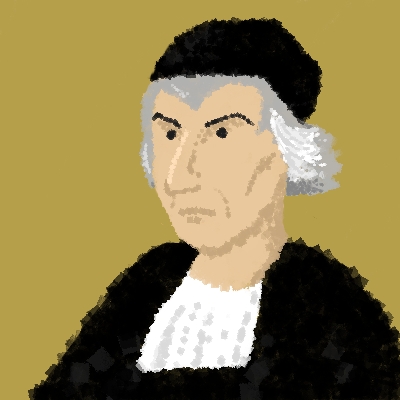

Previous
Next
Nebrija’s Latin Dictionaries
Search
About
Learn more about the Latin Dictionary and how it was created.

Nebrija was born in Lebrija, a small city belonging to the province of Sevilla in Andalusia whose foundation is attributed to the Phoenicians and the Tartessos trading in the left bank of the Guadalquivir since the 4th century B.C. The importance as a port city allowed it to be frequented by different groups of people who called it with different names. The Romans called Nebrissa, the Moors Nebrishah and those who preferred mythical associations called it Veneria, for they fancied the idea of the city venerating the god who founded it, Dionysus. This expresses an important Roman influence in the southern part of the peninsula that would eventually impact Nebrija’s perception of his origins and define his intellectual development.
Lebrija was controlled by the Visighotts until the beginning of the eighth century when the Moors expanded their territories from Africa to the Iberic peninsula. From 711 until 1492 most of what we know as Spain today received different names according to the political conditions ruling this land: in the beginning the territories were added to the Umayyad Caliphate, then in 756 it became independent and it was known as the Cordoba Emirate, the Caliphate of Cordoba and Al-Ándalus, all of them designated all the territories conquered by the Muslims in this part of the continent. The Arabic presence in the peninsula had a huge impact not only in the architecture, culture and language but also in the way the continent would justify certain practices on religious interests.
Elio Antoniode Nebrija was born in 1444, a time when the Catholic Monarchs were about to recover Lebrija from the barbaric influence of the Arabs. According to Pedro Martín Baños, one of Nebrija’s contemporary experts, the lack of consistent documentation and evidence from this epoque nourished, among historians and Nebrija’s biographers, a series of genealogical fictions to validate his noble past. Some stories tell us about how Nebrija’s ancestors were invested in campaigning for la Reconquista, a fact that could easily be used later to explain his importance as a Humanist in the future. However, Nebrija also did his job by creating his identity around the belief of his Roman ancestry, he carefully chose his names to go down in history.
As a young adult, Elio Antonio was sent to Bologna to study theology for five years in Italy but his real interests led him to the study of rhetoric and grammar. This included the analysis of manuscripts and the first printed books of classic authors. He was also an amateur of languages and letters, therefore he became a teacher, a linguist, and a grammarian with a great passion for Roman roots.
Nebrija returned to Castile in 1470 after five years of humanist immersion in Italy. He believed that change could only be attained through the transformation of the basis of society, and his weapon against barbarism was the studia humanitatis and the teaching of Latin. He set as a life goal to help with the eradication of the Moors and their influence out of his nation, to accomplish his ambitions Elio Antonio became a teacher at Salamanca University. According to Nebrija, the means to reach humanism was through the recovery of Latin as the unifying language of society. His first challenge as a professor was finding a new methodology for teaching Latin and his first step to overcome this situation was the writing of Introductiones Latinae.
With the arrival of printing in Salamanca in 1478, Nebrija saw a business opportunity in publishing books addressed to the student community of the city, he studied how the business worked and began to create connections with the owners of the printing machine to get some profit. Nebrija’s first printed book, Introductiones Latinae (1481), became one of the best sellers of the time and the thousand copies of the first edition were sold among the upper classes of Europe in just a few weeks. Until the end of Nebrija’s life this first version reached the 40 editions that included the first vocabulary Latin-Spanish and geographic dictionary. The Catholic Monarchs realized the importance of Latin as the language of intellectual development and diplomacy which reinforced the idea of “stressing the Roman and hence imperial origins of their cultural heritage.”
However, none of these implementations related to Latin as the language of instruction would be possible while the Nasri kingdom sat in the southern part of the peninsula. In 1490, several sieges and battles were carried by the Catholics to recover these territories, for the first time in seven centuries the end of la Reconquista seemed nigh. The tense situation with the Muslims seemed to have increased their disapproval among the population and every single freed city received the Catholic Monarchs as their saviors and accepted the conversion to Catholicism. In April 1491, Ferdinand and Catalina launched the siege of Granada, the last big city controlled by Boabdil, to force a pacific surrender of the city. The chief resisted the siege for eight months, but after realizing that no-aid would ever come his way from the north of Africa and the intention of the Monarchs to make this tactic last as long as necessary, he gave up the city in January 1492.
Four years before the defeat of the Moors, Nebrija had published the bilingual version of Introductiones Latinae. The humanist saw in this publication a preparatory step for his next project, a grammar of the Castilian language. The idea of a kingdom free of Muslim influence – language, religion and culture- made Nebrija think there was a need of writing this grammar to standardize the vernacular language to give it prestige and status. The presentation in court of an early version of Grammar of the Castilian language in 1486 did catch the attention of Isabella the Catholic, as Nebrija let us know later. The Queen had always been interested in languages and wanted to know what was in it for her, but when the time to provide her with an answer came, the archbishop De Avila told her that such a book would give to her majesty, and the kingdom, the structure of an empire since “language is the empire’s companion”, the language of the victorious allows the conquerors to impose the laws to rule the vanquished. Grammar of the Castilian language finally saw the light under the patronage of Zuniga in 1492, a few days after Columbus’ departure in the search of a new route to India. Unfortunately the number of copies sold was not as impressive as Introductiones Latinae, hence it could be considered the biggest professional failure in Nebrija’s career. However, this fact is what makes Grammar of the Castilian language so interesting.
How did such a “failure” become the icon of Nebrija’s work? Perhaps I should use the model for the study of the book, contrast the context and check the number of copies existing today.
